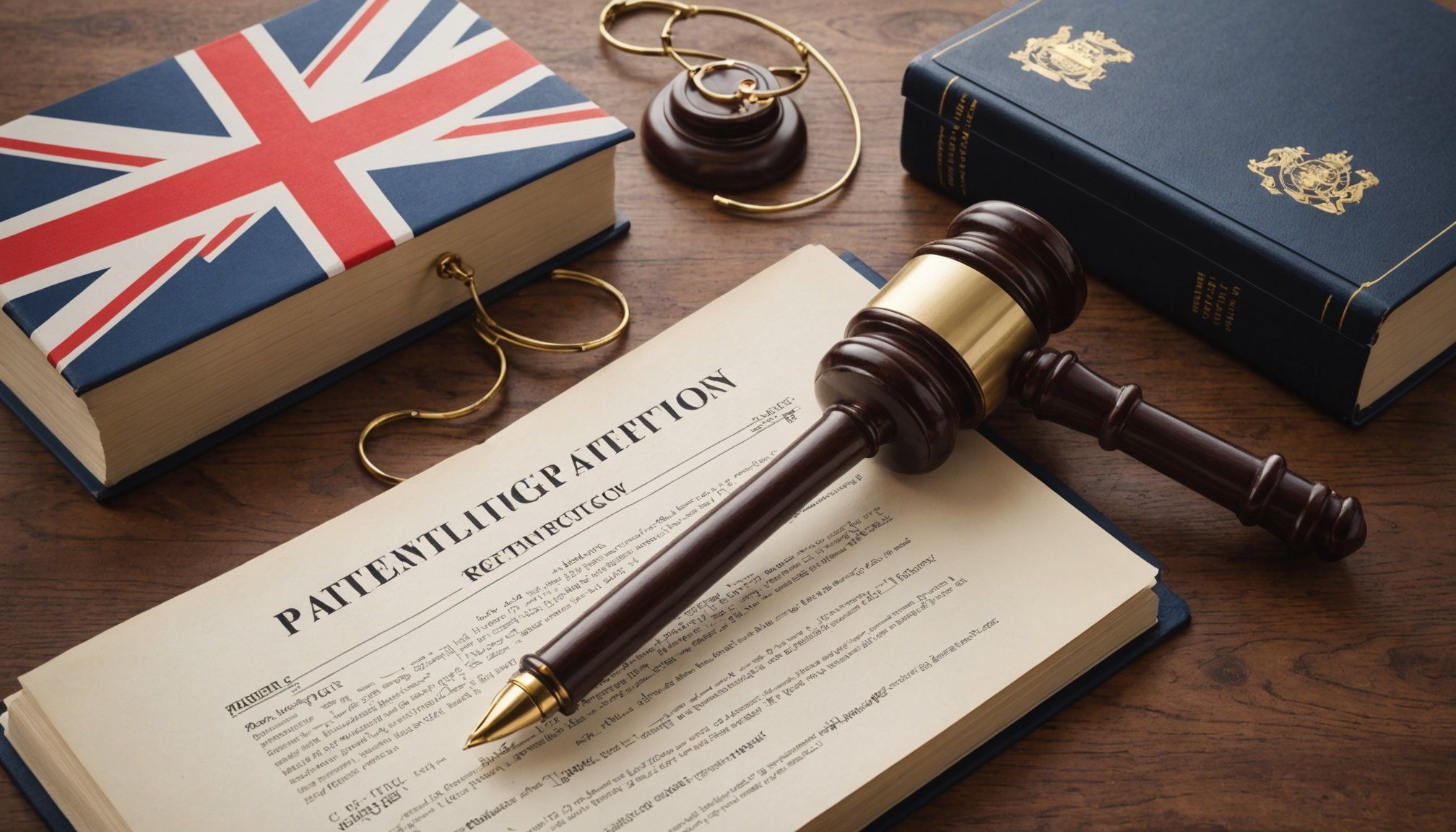Overview of Patent Protection in the UK
Patent protection serves as a cornerstone of patent law, offering businesses a crucial layer of intellectual property security. In the UK, securing a patent ensures that an inventor has exclusive rights to their invention, typically for up to 20 years. This exclusivity is vital for gaining a competitive advantage, allowing businesses to prevent others from using or selling their innovation without permission.
Understanding the different types of patents available in the UK is essential for any business. Primarily, there are utility patents, which cover new and useful inventions or processes, and design patents, protecting the appearance, style, or design of an object. Both types are part of the broader domain of UK patents and play a fundamental role in safeguarding an organisation’s intellectual assets.
Topic to read : Key legal requirements for uk companies to follow eu gdpr compliance when catering to eu customers
For businesses aiming to drive innovation, patent protection is not just a legal necessity—it is a strategic tool. It encourages investment in research and development by providing a safeguard against unauthorized usage. Moreover, robust patent protection can enhance a company’s valuation and attract potential investors, offering economic benefits that extend beyond the lifespan of the patent itself.
Step-by-Step Guide to Applying for a Patent
When tackling the patent application process, it’s essential to first assess the patentability of your invention. This involves determining if your concept is novel, non-obvious, and useful. Conducting a comprehensive patent search is crucial to ensure your invention hasn’t been patented already. This step can prevent repetitive efforts and possible legal contests.
This might interest you : Key legal considerations for uk businesses setting up direct debit payment systems
Initial Considerations
Before filing patents, gather necessary documentation. You’ll need detailed descriptions, sketches, and technical data. Information such as the invention’s purpose, how it works, and its benefits are vital. This comprehensive documentation supports patentability claims and helps in crafting a strong application.
Preparing and Filing the Patent Application
Your application’s success hinges on the clarity and detail of your description. Articulate clearly the invention’s workings and claims. Selecting the correct patent office and understanding different application types, like utility or design patents, is crucial. These choices impact the filing process and potential protections.
Post-Submission Steps
After submission, the examination process begins. Understanding its timelines and preparing for potential objections is vital. You may be asked for additional information to clarify claims. Upon successful examination, maintenance requirements must be followed to uphold your patent’s validity. Regular compliance ensures continued protection of your innovation.
Key Legal Considerations in Patent Protection
Understanding the scope of patent rights is crucial for any inventor. These rights grant exclusivity, allowing patent holders to prevent others from manufacturing, using, or selling the invention without permission. However, the legal implications of these rights vary. Patent limitations, such as duration and geographical coverage, mean inventors should be aware of how far their protection extends.
Under UK law, patent holders have specific legal obligations. It’s essential to maintain patent enforcement proactively. This requires keeping the patent renewed and up-to-date. Additionally, holders are responsible for monitoring potential infringements. Failure to enforce rights actively could lead to questions about their validity later.
To effectively enforce patent rights, inventors can employ various strategies against infringers. Initiating legal proceedings is a direct approach but can be costly and time-consuming. Considering alternative dispute resolution methods, such as mediation or negotiation, can be a cost-effective and less adversarial means to resolve infringements. Some opt for licensing agreements, turning possible infringements into profitable collaborations. Each approach requires a strategic evaluation of the specific legal implications and the potential outcomes involved.
Common Pitfalls in Patent Application and Management
Navigating the patent application process can be daunting, but understanding common mistakes can help businesses avoid costly errors. One frequent misstep is the neglect of comprehensive prior art searches. Without thorough research, businesses risk duplicating existing inventions, which can lead to rejected applications or legal challenges. A reliable strategy is to invest in expert searches and analyses early in the process.
Another common error is overlooking the continuous monitoring and renewal of patents. Patents are not static assets; they require routine checks to ensure they remain in force and relevant. Ignoring renewal deadlines can lead to lapses, which means losing exclusive rights to an invention. Maintaining an organised record of patent portfolios and setting alerts for renewals are practical solutions.
Inadequate documentation during the application phase is also a critical issue. Poorly drafted patent documents might miss essential details, leading to vague claims that are challenging to enforce. Engaging with skilled patent attorneys can ensure clarity and precision in patent documentation.
By recognising and addressing these patent pitfalls, businesses can enhance their intellectual property strategy and maximise the potential of their innovations.
Resources for Patent Assistance in the UK
Acquiring a patent is a crucial step for protecting innovations. Navigating the process in the UK requires access to specific patent resources to ensure success.
Patent Office and Official Guidelines
The UK Intellectual Property Office (UKIPO) plays an essential role. This official body offers comprehensive guidance and resources crucial for filing patents. By exploring UKIPO’s website, applicants can access forms, application procedures, and legal frameworks. Such resources reinforce the importance of following official channels throughout the patent process.
Legal Assistance and Consulting Services
Engaging with reputable patent attorneys and agencies can significantly streamline the application journey. In the UK, these professionals provide advice, interpret complex legal jargon, and enhance the application’s chances of success. Using online platforms like the Chartered Institute of Patent Attorneys, individuals can find vetted experts, securing their intellectual property assets through professional assistance.
Educational Resources and Networks
For those desiring deeper understanding, books and online courses on patent law are invaluable. Networking opportunities, such as attending UK-centric intellectual property conferences, offer insights and strengthen connections with other innovators. Workshops particularly highlight the latest trends and updates, ensuring applicants are well-versed in evolving patent resources.











